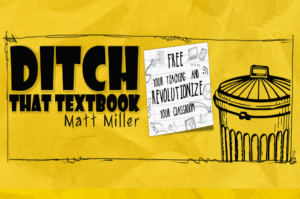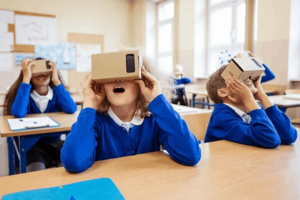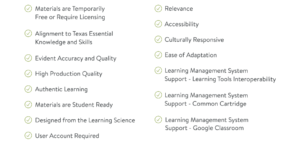Are Textbooks Transitory?
“The standards are the spine not the instructional materials.” I recall Vicki Phillips, who was superintendent in Lancaster Pennsylvania at the time, saying something to that effect when I visited her almost ten years ago. She was explaining the important difference between a standards-based curriculum and textbooks as the curriculum. What was most impressive was the teacher engagement in assembling standards–based lessons. I got the impression that teachers owned the expectations and weren’t just covering content.
With the shift from print to digital and from information scarcity to abundance, there’s no reason to be limited to a single instructional resource. That’s why I’m a skeptic about digital textbooks—they seem like a transitory technology that will be replaced by learning object libraries and smart recommendation engines.
However, today I meet with an experienced mobile computing team interested in serving the education market and they were hanging digital ornaments off a flat and sequential textbook. It sparked an interesting discussion about the value of curation, organization, and narration. They believe that good textbook authors provide an invaluable service and that it will be a long time before personalization strategies are strong enough to create coherent and effective replacements.
What’s your take? Will digital textbooks be around for a generation or two or will engaging content soon hang from a standards-based spine?
One thing that is clear is that cool learning apps are being introduced every day. I also visited with Eli Luberoff from Desmos (a Learn Capital portfolio company) and reviewed his graphic calculator—I wish that had been around when I was learning algebra. The ability to manipulate variables and visually see the result is such a powerful learning tool. Beyond the calculator, Desmos is creating a standardize way to share interactive touchscreen content—and that will soon be most instructional materials.
Here’s a profile of Desmos from their debut at TechCrunch Disrupt. It’s interesting to note that Eli took several alternative routes from grade 6 to 16. He was bored by a traditional approach (and textbooks) and learned a lot through exploration. Textbooks will probably be around for longer than I expect, but it’s clear that they will increasingly be supplemented by personalized and engaging digital content.
[this post appeared first on Huffington Post]








Ed Jones
Was just writing on this. And thinking how ponderous y K-12 learning was.
"National standards ...seem fresh and democratic now, But it's not a recipe for long term innovation and adjustment.
The world is changing too fast. How can one group know what is needed in times of such change?
So, for example, CCSS standard 7.G.demands that students (in 7th grade) draw triangles and note that they have angles and sides. Isn't that extremely boring for a wide swath of students? What if they were instead inputting code for dynamic geometric sketches over at SketchPad? Wouldn't that be a step far ahead?
Cars and Triangles
Is static math even the prime thing we should be teaching?
You'll find few in this game who understand the uses of math as I do; I took eighteen years of math with me to the development of the world's most complex avionics system. I've used math from radar mapping to terrain following flight software to satellite positioning to communications, and down to finance, to land surveying and to 120V power distribution in public parks.
Yet maybe there's study more appropriate than CCSS math. Maybe K-12 students should be learning more of computer science: arrays and stacks and hashes. Perhaps the should be learning these things in 8th grade while they are programming them in Ruby or Javascript. And so perhaps they should be learning in 7th grade the basics of programming.
Textbooks will only be around for a generation if we let them.